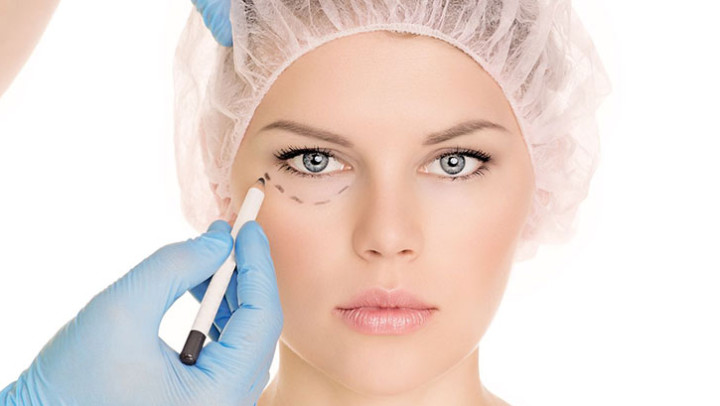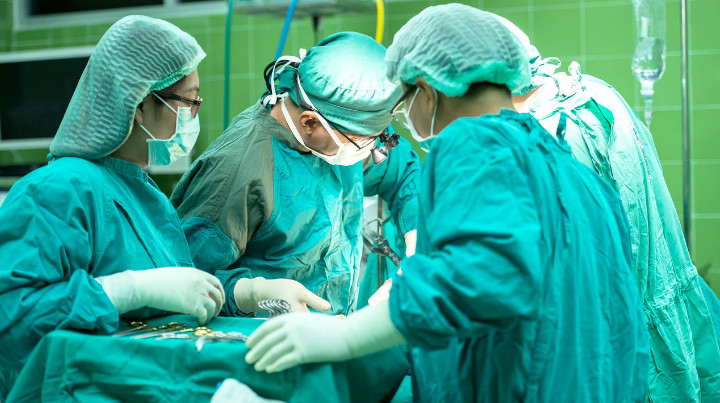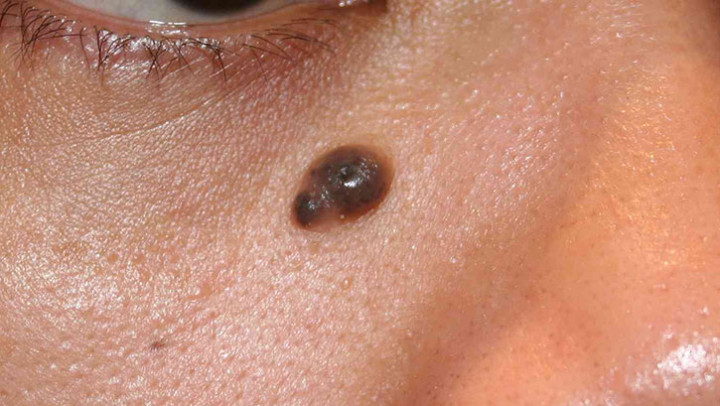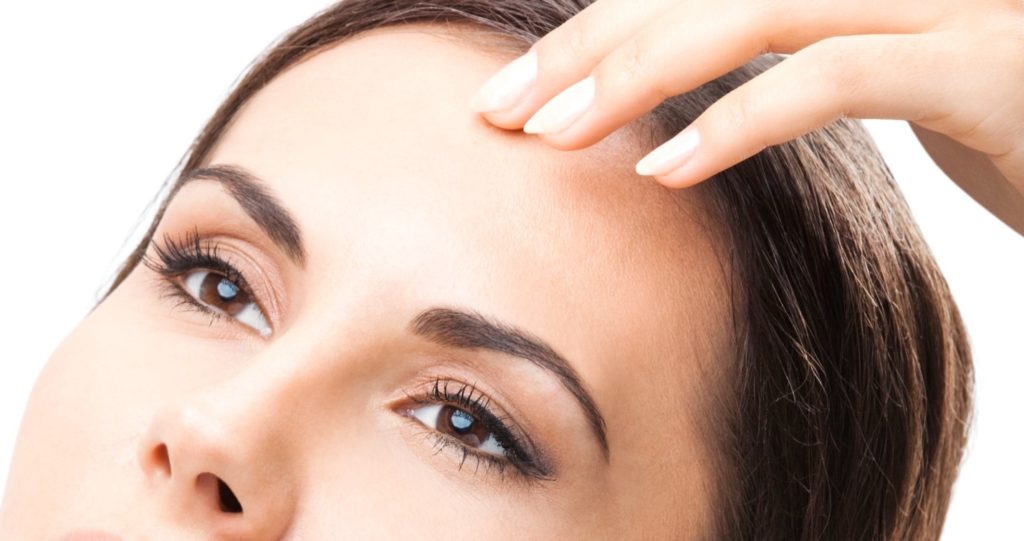Considering Rhinoplasty? Here are 5 Questions to Ask Yourself
 Cosmetic surgery of any kind is a big decision and one that should not be made on a whim. Altering your physical appearance is an often-permanent and often-rewarding process, but only if you know what you want to change and why you want change it. A rhinoplasty is the second most common cosmetic procedure in the United States today. The surgery aims to both improve breathing problems and promote self-confidence, depending on each individual’s case.
Cosmetic surgery of any kind is a big decision and one that should not be made on a whim. Altering your physical appearance is an often-permanent and often-rewarding process, but only if you know what you want to change and why you want change it. A rhinoplasty is the second most common cosmetic procedure in the United States today. The surgery aims to both improve breathing problems and promote self-confidence, depending on each individual’s case.
Why Do I Want to Do This?
It’s completely understandable to feel self-conscious about the way you look, especially regarding your face. Unlike your body, parts of your face you are unhappy with cannot be hidden by clothing. It’s only natural to want to look your best. The beauty norms in today’s society are hard to escape or ignore but they should by no means dictate standards of which you must live up to. Before you do anything, you must ask yourself, are you doing this for you or for those around you? If the answer is not the former, you may want to reconsider your decision.What Do I Expect?
Before you undergo this type of surgery, it is wise to manage your expectations. Keep in mind, your doctor can only work with the existing natural structure of your nose. A clear understanding of the procedure, results, and recovery will only ensure that you go into your surgery with realistic expectations and come out of your surgery with a rewarding outcome.Do I Have Time for the Recovery Process?
With advancements in medicine and technology, we are living in a time very conducive for the surgery healing process. Taking off time from work, your family, or school is not always easy so it is wise to have your ducks in a row before you follow through with a decision like this. Luckily the recovery process for a nose surgery is relatively fast. Although you’ll be wearing a nose splint for around a week, it’s possible you’ll be able to return to your job in a matter of days (provided your profession doesn’t require too much physical exertion).Is This the Right Time?
It is best to be in good overall health for a procedure like this. Those with pre-existing health conditions should speak with their doctor about possibly pursuing alternative solutions. If your life is currently up in the air or you are dealing with uncertain and stressful circumstances it may be wise to hold off on a cosmetic facial surgery until you are in a better position to make a clear decision.Have You Found the Right Surgeon?
Perhaps the most time consuming and important decision you will face before surgery is choosing your surgeon. If you are building house you want to hire the best wood workers and similarly, if you are making a permanent change to your physical appearance, you want the doctor best equipped to do so. Certification, background, experience are all things you need to research and consider before deciding on which surgeon is right for you. Ideally this person should be someone you feel comfortable around and someone who specializes in rhinoplasty procedures. Dr. Binder’s approach to nose surgery not only improves function, but creates such natural and balanced results that no one will be able to tell that a procedure was ever performed. With 30 years of experience as a double board certified plastic surgeon, Dr. Binder has produced success story after success story. Why continue to live with insecurities or breathing difficulties when with just a call to our offices you can start on your way become a success story, too?Surgical Reconstruction for Extreme Physical Damage
 When many people hear the words “plastic surgery” they immediately think of breast augmentations, liposuction, and age-defying Botox injections. Of course, there are many other procedures in the realm of plastic surgery than the purely cosmetic. In many cases, plastic surgery is performed for reconstructive or reparative purposes, rather than cosmetic or aesthetic reasons. Following physical trauma that leaves lasting damage, certain cosmetic surgery can restore not just the physical appearance of damaged tissue, but also physical function.
When many people hear the words “plastic surgery” they immediately think of breast augmentations, liposuction, and age-defying Botox injections. Of course, there are many other procedures in the realm of plastic surgery than the purely cosmetic. In many cases, plastic surgery is performed for reconstructive or reparative purposes, rather than cosmetic or aesthetic reasons. Following physical trauma that leaves lasting damage, certain cosmetic surgery can restore not just the physical appearance of damaged tissue, but also physical function.
Why Might Someone Need or Want Reconstructive Surgery?
Following an accident or other injury that results in physical trauma, once a patient’s overall health has become stable again, thoughts begin to turn to repairing the damage, particularly in the case of severe or disfiguring facial trauma. Studies have shown that patients with uncorrected facial trauma have a higher incidence rate of body-image issues, depression, and post-traumatic stress disorder.Types of Reconstructive Surgery
This type of surgery takes many forms, and the number of techniques and procedures is growing every day. Facial reconstruction in particular is a rapidly growing field, and now includes techniques that would have been impossible even just a decade ago. Facial reconstructive procedures can include:- Scar Removal or Revision
- Skin Cancer Removal
- Mole Removal
- Facial Fillers
- Revision Rhinoplasty
- Custom Reconstructive Implants
- Burn and skin graft revision
- Other Skin Resurfacing
Reconstruction of the Skin
Skin treatments typically take the form of chemical peels or laser treatment to lessen the raised appearance of scars, or to eliminate excessively darkened or lightened pigmentation following a burn or skin graft. These same procedures can also be used to reverse the appearance of fine lines and wrinkles that comes as a result of passing time. Laser treatments, particularly C02 laser treatment, can also be used to “sand away” a raised or hypertrophic scar in order to bring it in line with the rest of the skin on the face, thereby making it far less noticeable and obtrusive. The same can also be done with dermabrasion, and often the two techniques are used in conjunction with chemical peels and other deeper reconstructive options to achieve the very best result.Skin Treatments Beneath the Skin
For deeper damage that causes the skin to be raised or lowered, particularly following trauma such as a burn, there are more intensive options that can aid in scar removal. This typically takes the form of collagen or other fillers, but it can also include tissue expanders that help to bring the skin together to promote smoother, more aesthetic healing. This procedure is a bit more involved than other simple skin treatments, but it can also be used in combination with Z-plasty to help bring severe scars more in line with the natural lines of the face in order to more effectively blend them into the surrounding skinWhat Reconstructive Surgery Can’t Do
Despite the advances in modern cosmetic surgery, there are some things it just can’t do. For one, deep burns are particularly problematic to reconstruct, as there is often very little tissue left to work with. There is likely to always be some measure of visible damage following a severe burn. However, even the most severe scarring can be lessened with the proper techniques. By combining several different types of reconstructive procedures to achieve a customized solution, severe scarring can be improved and the physical and emotional after-effects of trauma can be lessened.Why Choosing the Right Surgeon Matters
The most important part of any surgery is choosing the right surgeon. The very best reconstructive surgeons are the ones that specialize in particular areas of care, so be sure to find one that is specifically focused and well versed in facial reconstruction, before choosing to undergo such delicate procedures. Facial scarring can easily be made much worse with improper or poorly performed scar removal procedures, making it especially important that you choose a reliable physician with an excellent track record. Dr. William J. Binder is one of the world’s leading facial reconstructive experts, and has a long history of innovation and creative application of advanced reconstructive procedures. He is based out of Los Angeles, but due to his expertise and experience, patients from around the country and even the world come to receive treatment from him. Dr. Binder is extensively published and is board certified by both the American Board of Otolaryngology and Head and Neck Surgery and the American Board of Facial Plastic and Reconstructive Surgery. If you have questions about facial reconstruction and want a consultation with the very best, contact Dr. Binder’s office today.
8 Interesting Facts about Botox
-
Botox Is the Most Popular Cosmetic Procedure in America
-
Botox Is a Muscle Relaxant
-
Overactive Bladder Conditions Can Be Alleviated with the Help of Botox
-
Botox Can Treat Migraines for Up to Three Months
-
Cosmetic Applications of Botox Were Discovered by Accident
-
Botox is Older Than You May Think
-
Botox Is One of the Safest and Most Well Researched Products Available
-
In Addition to Being Safe, Botox is Remarkably Effective
The Botox Expert
Even though Botox is safe and well understood, choosing the right person to administer your treatment is essential in achieving the best possible results, especially if you need Botox for medical purposes. Botox must be applied carefully and precisely in order to target just the right muscles while still achieving a natural look, so patients should seek out a licensed and board-certified plastic surgeon with ample experience administering Botox treatments. Dr. William J. Binder is one of the world’s leading experts on Botox, as mentioned previously in this article due to his pivotal role in bringing relief to migraine sufferers. He is based out of Los Angeles but, due to his expertise and experience, patients from around the country and even the world come to receive treatment from him. Dr. Binder is extensively published and is board certified by both the American Board of Otolaryngology and Head and Neck Surgery, and the American Board of Facial Plastic and Reconstructive Surgery. If you want your Botox treatments from one of the world’s leading plastic surgeons and experts in Botox, contact Dr. Binder’s office today to schedule your consultation.
What Happens to Your Facial Skin During Winter
COVER UP
In addition to bundling your body with as many layers as possible, be sure to remember the most important layer: your skin. Whenever your bare flesh is exposed to the elements, they take their toll. By applying a moisturizer with the proper SPF, you multiply your skin’s defense against the weather. Even though sunblock is considered a summer accessory, SPF actually stands for “sun protection factor” - and the sun shines year round. “Protection” is the key word of the popular phrase/acronym, so protect yourself heartily this winter. And for the best defense, just add water…STAY HYDRATED, INSIDE AND OUT
Water is the essential building block of all life, so any physician would agree that hydration is the key to great health. Stock up on H2O, but be wary of how you sip it. Drinking directly from a cup or bottle leaves watery residue on your lips. When that runoff evaporates, it draws your natural oils with it. This can result in chapped lips, which triggers a thirst for more water, creating a vicious cycle. Instead, you should drink from a straw and be sure to apply a petroleum-based salve on your lips at the first signs of chapping or chafing. But it’s not enough to just imbibe water; you should also incorporate moisture into your daily routine and environment. Many people use humidifiers to “winterize” their homes. Ideally, the humidity should measure between 30 and 50 percent (this can be measured with a hygrometer). But external hydration has its limits, so don’t overdo it.AVOID EXCESSIVE, HOT SHOWERS
While long, hot showers can feel like a welcome reprieve from the February climate, the heated water is harsh on your skin. Keep your bath time brief and use gentle soaps with moisturizing ingredients. After your shower, use a towel to pat dry. Rubbing with a rough cloth can irritate your skin. This rule also applies to the inner layers that you don when you get dressed, so avoid wools and polyester; the more contact these itchy fabrics have with your skin, the more they irritate it. Instead, wear breathable fabrics that are more conducive to the maintenance of healthy skin.EXFOLIATE RESPONSIBLY
The dead cells accumulating on the surface of your skin can prevent the growth of healthier replacement cells, so exfoliation is vital to battling the winter blues. By removing these dead cells, you prevent them from clogging up your pores and worsening the irritation of the cold weather. You can exfoliate at home or get more thorough treatments from a cosmetic or plastic surgeon. At-home exfoliators can include jojoba scrubs, beads, fruit enzymes, and other treatments. Alternately, you could opt for professional skin resurfacing treatment such as chemical peels, dermabrasion, and microdermabrasion, or laser resurfacing treatments. Regardless of the type of exfoliation, be sure to moisturize well afterward, as the process strips your skin of its protective layer of oils.REPLENISH YOUR SKIN
Once you’ve taken steps to protect your skin against further damage from the cold, you need to resupply your skin with the hydration that it has already lost. You should also apply ample moisturizers to both promote cell health and replace the protective barrier of your epidermis. Your moisturizer should be oil based rather than water based (rule of thumb: many moisturizers marketed as “night creams” are oil based), but be careful to use oils that won’t clog your pores, like mineral oil, primrose oil, avocado oil, or almond oil. Avoid shea oil and shea butter. Ideally, your moisturizer will contain humectants, which are ingredients that promote your skin’s natural hydration. Ingredients to seek out include glycerine, sorbitol, and alpha-hydroxy acids.CONSULT A PROFESSIONAL
To maximize your healthiest glow during the winter, be sure to visit a medical professional. A dermatologist can help you determine the best routine to ensure the health of your skin. Additionally, a plastic surgeon who specializes in facial cosmetic procedures can strategize the smartest ways to keep your skin looking its best the whole year through. Based out of Los Angeles, Dr. William J. Binder is considered one of the world’s best plastic surgeons. He is double board certified, has been extensively published, and has 10 patents on various medical devices and pharmaceuticals. Give your skin the care and consideration it deserves, especially in the severe and stressful winter months. Contact Dr. Binder’s office today to schedule your consultation.
Face and Neck Lifts: An Overview
About Facelift and Neck Lift Surgeries
Facelift surgery is used to correct signs of aging in the lower portion of the face; in the areas roughly level with the nose and mouth. In order to do so, a plastic surgeon begins incisions at the temple and continues down in front in the ear, below it, and then back behind the ear. The skin is then gently moved to tighten up sags and wrinkles. Excess skin and fat may be removed to create a smoother, more youthful final result. Incisions are closed with fine sutures or metal clips, allowing the surgeon to avoid shaving the incision site. Neck lift surgery uses a similar process to tighten up sagging and correct muscle banding in the neck. Incisions for neck lifts begin similarly to those used for facelifts, going from the temple down in front of the ear, then curling below and behind the ear. For some neck lift procedures, these incisions may be all that’s needed and the skin can be repositioned. For others, additional incisions may be made below the jawline for further repositioning of the skin. Like with facelift surgery, excess skin and fat may also be removed. Incisions are closed with sutures. Both procedures are performed under a combination of sedatives, general or mild intravenous anesthesia (“twilight sleep”), and local anesthesia. Incisions for both procedures are placed in natural contours of the face so that they are almost invisible once healed.Which Lift is Right for Me?
Though facelifts and neck lifts can be performed individually if patients are happy with the appearance of their lower face or neck, but not the other, they can also be performed together. In fact, having both performed often gives better results. This is especially true if the procedures are conducted simultaneously as it allows the surgeon to take a more holistic approach and create a more unified appearance. Many patients interested in facelift and neck lift surgeries claim that their physical appearance does not match their mental age. Good candidates for either a facelift or neck lift are unhappy with the aging appearance of the area in question, have no health issues that could impede healing or cause complications during surgery, do not smoke, and have optimistic and realistic expectations for what their surgery can achieve. While these procedures can reverse signs of aging, they do not stop the aging process altogether. Patients will continue to develop symptoms of aging.Additional Procedures
Because facelifts don’t modify the entire face, other procedures are often performed in conjunction with face and neck lifts in order to tighten up the brow and eye areas, in addition to giving more dramatic and comprehensive results in general. If the upper area of the face only needs minimal improvement, dermal fillers and skin resurfacing treatments like chemical peels and microdermabrasion can be used to correct minor wrinkles, scarring, under eye bags and dark circles, and discoloration. However, the effects of these treatments is temporary and they can’t rival the results of surgical treatments, though they can prolong the need for them. Non-surgical procedures can also serve as alternatives for patients whose health does not allow them to undergo surgery. Additional surgeries can also be performed in conjunction with facelifts and neck lifts. For more significant revision of the upper part of the face, patients may want to consider blepharoplasty (eyelid surgery), brow and forehead lifts, or a combination of these. Surgeries can also be used to enhance the results of facelifts and neck lifts. Facial liposuction and fat grafting can be used, especially on the neck, to remove fatty deposits and bags and relocate the fat to areas that have become sunken over time, such as the cheeks and under the eyes. Facial implants and rhinoplasty can be used to provide additional augmentation to create a more pleasant appearance in general, rather than just correcting aging, or as reconstructive procedures following illness or an accident.The Right Plastic Surgeon for Your Face or Neck Lift
Dr. William J. Binder is a double board certified facial and reconstructive plastic surgery specialist and one of the world’s leading plastic surgeons. His surgery is located in Beverly Hills. If you want your lift procedure performed by one of the best, don’t wait. Contact Dr. Binder’s office today to schedule your consultation so that you can start looking as young as you feel.
Looking after Your Face Post-Surgery
What to Expect After Your Procedure
Every procedure and every person is different, so each patient’s recovery is different, but there are some generalizations that can be made. Along with swelling and bruising, most patients will experience redness, sensitivity, tightness, and numbness, but the recovery process after invasive surgical procedures differs significantly from recovery after minimally invasive procedures. Regardless of the type of procedure you’ve undergone, your doctor will likely prescribe or otherwise recommend medication. These may include oral pain relievers, antibiotics, or steroids, or topical antibiotics or steroids.After Surgical Plastic Procedures
For invasive surgical procedures, these symptoms typically fade within a few weeks. You will often have to stay at the surgical center at least overnight. You will be sent home with the surgical site dressed in bandages, and will often also have to wear a pressure wrap to reduce swelling and help set the results. You will be impaired after your surgery, so you should have someone drive you home and on hand at home to help take care of you and your obligations while you heal.After Skin Resurfacing and Minimally Invasive Procedures
For dermabrasion and other forms of skin resurfacing the above symptoms usually last for only one to two weeks, though the skin may continue to have some pinkness for four weeks or more. Patients may also experience some crustiness as the skin heals, which can be removed with a soft wash cloth wetted with warm water. Even injections can leave the skin with some pinkness and feeling sensitive. These procedures are typically outpatient procedures and you can often even return to work immediately following your procedure.Pamper Your Skin
Regardless of the type of procedure you undergo, you need to baby your skin afterwards. Your skin will be particularly sensitive, so using sun protection and a heavy duty moisturizer is imperative for ensuring the best possible healing. However, talk to your doctor about what he recommends before applying any product to skin that has not yet fully healed. Don’t apply cosmetics or other skin products to open wounds, unless your doctor specifically recommends it. After wounds have closed, cosmetics may be applied. Stick to thin layers of lightweight mineral formulas specifically made for sensitive skin. Use a green color corrector under concealer or foundation to counteract any red or pink tint to your skin. At the end of the day, wash off cosmetics and other products thoroughly with a gentle cleanser.Choose the Best Doctor
The best thing you can do to make your recovery quicker and easier is choosing a skilled and experienced plastic surgeon. The best plastic surgeons know the most effective techniques and can make smaller incisions, so your procedure results in less trauma and therefore less need for later scar removal. It also makes it easier for your body to recover. The best surgeons can also give you the best possible possible recovery and care instructions, giving you better and more natural results with less risk of scarring or modifying results. Dr. William J. Binder is a Los Angeles based facial plastic surgeon who is considered one of the world’s leading plastic surgeons. He is board certified by both the American Board of Facial Plastic and Reconstructive Surgery and the American Board of Otolaryngology and Head and Neck Surgery, but Dr. Binder’s true passion is working with his patients. Contact Dr. Binder’s office today to schedule your consultation.
What to Do if You Think You Have a Cancerous Mole
Recognizing a Cancerous Moles
The first indicator of skin cancer is typically changes in the skin. This can be changes in the moles you already have or the development of what appears to be a new mole. Dermatologists recommend the ABCDEs test for screening one’s self for skin cancer in order to detect cancer as early as possible. This test involves checking your moles for five different signs of skin cancer. If your moles show any of these signs, you may have skin cancer.- Asymmetry: If some part of the mole varies from the typical round shape of moles, the mole may be cancerous or precancerous.
- Border: Benign moles have smooth, defined borders, but cancerous or precancerous moles may have uneven or unclear borders.
- Color: While healthy moles are typically uniformly colored some shade of brown, cancerous moles are often inconsistently colored and may have red, white, or blue shades.
- Diameter: Cancerous moles are typically larger than benign ones, which are usually smaller than a pencil eraser, about a quarter inch in diameter; but cancerous moles are often smaller than this when they are first detected.
- Evolving: Benign moles typically remain the same throughout time, but cancerous or precancerous moles may be show change. If you’re not sure if your mole is changing or not, try regularly taking pictures so that you can compare its appearance over time.
Mole Removal Surgery
The exact process of mole removal surgery is different for each patient, because each patient’s health and cancer growth is different, but most surgeries follow this basic pattern. First, the patient is anesthetized, and then the actual removal occurs. Small cancer lesions typically require only a basic excision surgery. However, skin cancer can also reach deep into the skin without clear borders. If this is the case, surgeons typically use a surgical technique called Mohs micrographic surgery. This technique requires the removal of the cancer lesion and the surrounding tissue layer by layer, with each layer sent to the lab for testing for cancer cells. Layers continue to be removed until test results indicate that no more cancer cells are present. Some patients, especially those with deeper cancer growths, may need reconstructive steps after their cancer is removed. All patients should plan on going back to their doctor later for additional tests to ensure that all traces of cancer are definitively gone.Choosing the Right Surgeon for Your Procedure
When most people think of skin cancer removal they think of a dermatologist or oncologist; but for patients with facial skin cancer, a plastic surgeon is often the better choice. However, not just any plastic surgeon is qualified to perform skin cancer removal surgery. Patients should choose an experienced plastic surgeon who specializes in reconstructive facial plastic surgery. Furthermore, it’s not just important to choose the right kind of doctor, it’s also important to choose the right individual doctor. Your surgeon is imperative in keeping you relaxed and confident during the process, from diagnosis to follow up, which can be very stressful for patients. Your surgeon should take the time to make sure you are comfortable and fully informed about the process.Dr. William J. Binder
Skin cancer is a serious disease and you deserve the best possible surgeon to help you through the cancer removal process. If you’ve recently gotten a skin cancer diagnosis or are suspicious that you may have skin cancer, it’s better to act sooner rather than later. Contact Dr. Binder’s office today to schedule your consultation.

